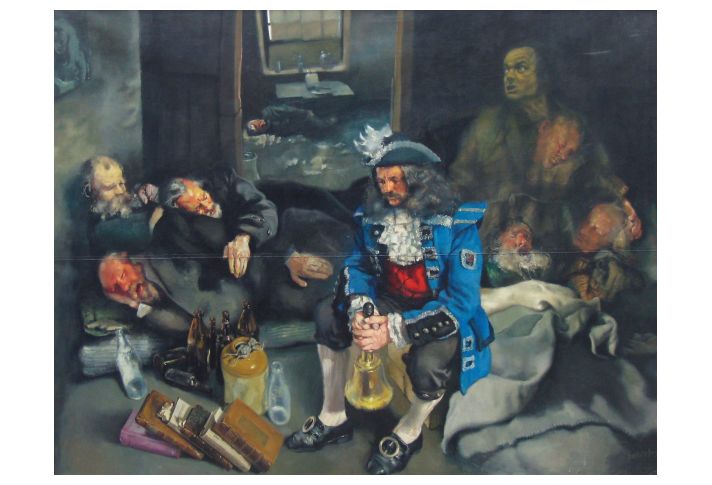Lenkiewicz would have witnessed similar scenes in many of the ‘dosses’ or disused warehouses he commandeered to house vagrants in the late 60s and early 70s, who called them ‘The Cowboys’ Holiday Inns’. The town crier or ‘bellman’, seen in traditional garb, was also a city’s official ale taster, who would certify the brew as fit for consumption. Throughout his life Lenkiewicz criticised the attitudes of breweries and city officials who licensed innumerable premises in Plymouth’s historic Barbican area. In one famous spat with the council, Lenkiewicz erected street signs in the narrow lane next to his gallery which was frequently used by Barbican drinkers as an open-air toilet. When the council objected to the phrase ‘Piss and Puke Lane’, Lenkiewicz switched to a variety of other languages, both ancient and modern. The artist took great pleasure in exposing the hypocrisy of a city galvanised by fear of causing public offense by the scholarly use of language but apparently incapable of action to prevent fouling of the lane.
The centrepiece of the so-called The Masterpiece Museum, part of the ironic Project Paintings Designed to Make Money, it was shown in 1975, alongside The Diogenes Con Show. The exhibition notes claim the work is by a deceased painter and state:
‘The Masterpiece’; or, Plymouth Mourning Over its Unfortunates. Value? Priceless. This complex work conceals a large amount of allegorical symbol; suffice it to say that what is known of its underlying meaning covers the following associations: The Seven Sleepers of Ephesus; The Studio, by Gustave Courbet; social art at its worst; the mythology of sleep, etc.









